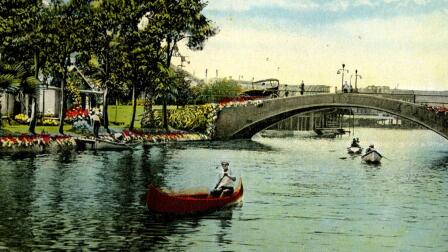Iron Sprawl: How Trolleys Made L.A. a Horizontal City
Although local supplies were scarce, once imported from elsewhere, iron and steel would transform Los Angeles’ urban form. Like many cities, Los Angeles at first used the metals metals to grow vertically. In 1883, Baker Iron Works built the city's first elevator inside the Nadeau Hotel, a machine that freed architects to build high above the reach of stairs. In 1904, the city celebrated the completion of its first "skyscraper" – the 12-story Braly Block at Spring and Fourth, made possible by elevators and steel-frame construction. But ultimately Los Angeles used iron to grow out, not up. The steel rails of trolley lines spawned countless suburbs across Southern California’s coastal plain, encouraging the decentralized sprawl that later became a defining feature of the automobile metropolis.











